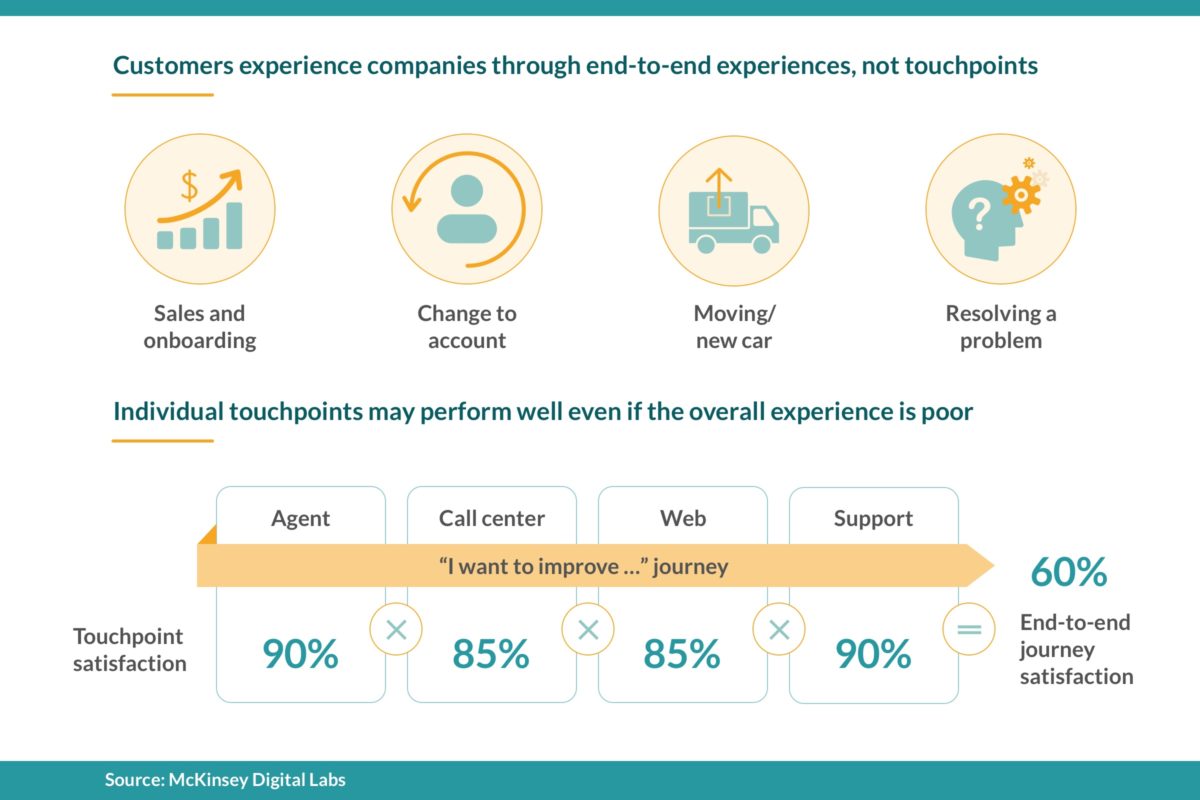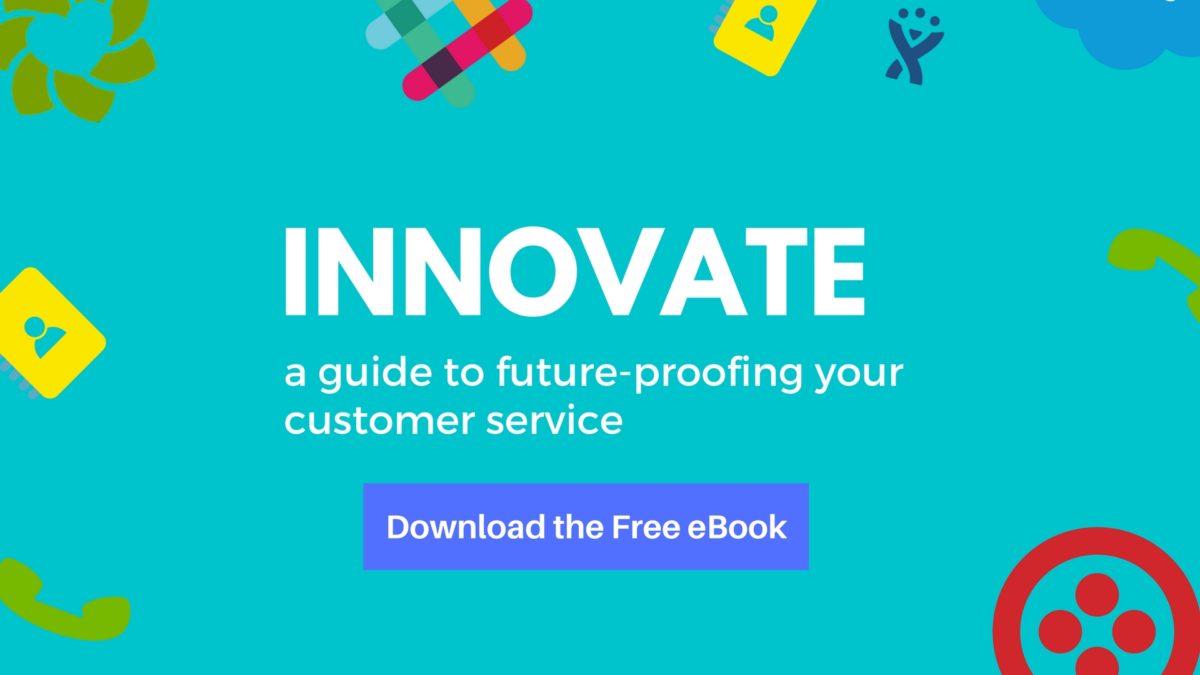Throughout every business, dedicated teams work behind-the-scenes to streamline key processes. Marketing ops, for example, works to drive the marketing department by measuring and optimizing marketing initiatives. Similarly, sales ops focuses on refining sales processes (like quote creation) so that salespeople can close more prospects, more quickly.
While it’s great to have such narrowly tailored teams focusing on the ins-and-outs of departmental processes, it can also lead to an unintended consequence: siloing. These teams largely operate independently of each other, so they can’t share important information or coordinate on initiatives that could improve the customer’s overall experience. According to McKinsey Digital Labs, the customer journey can still be subpar, even if individual touchpoints are optimized.
What is Customer Ops?
As an answer to this problem, many companies have adopted a new, unified approach: customer ops. The goal? Enhancing the customer journey. To do so, you need to strategically tinker with processes that span your entire organization and measure the results.

“Customer ops provides the software and metrics for the entirety of the customer journey, from first touch to ongoing support and expansion,” explains Tomasz Tunguz, a well-regarded venture capitalist. “Such a team measures and optimizes customer experience from end-to-end. Also, this team can provide […] holistic, data-driven perspective on growth.”
Customer ops is a fairly new term so, from a practical perspective, what does this look like in an enterprise? Here are four companies that have embraced customer ops and how they’re improving operations with the concept.
Related: An overview on customer support automation
Southwest Airlines: Eliminating Back-End Processes with Automation
Southwest Airlines serves over 8 million travelers each year. To ensure that every passenger has a great experience, the airline must handle and parse through large amounts of customer data. Using a platform called OpsSuite—part of a larger $800 million technological investment—allows Southwest employees and contractors to collaborate digitally.
Every day, more than 10 million messages are posted to OpsSuite by employees. Rather than rely on older tools like logbooks and radios, the airline embraced digital customer ops by switching to a web app package. The new digital platform provides them with a 360° view of all tasks that need to be completed in order to make the customer experience great—even though these tasks span many departments and teams.
Mosaic: Equipping Support and Sales with The Right Customer Information
As the nation’s leading residential solar financing outfit, Mosaic is a FinTech company that provides competitive financing products that homeowners afford solar installations. Because solar is such a rapidly-growing industry, the company disburses a high volume of loans—which frequently require support.
“Our support team fields thousands of calls per week,” says Bob Sturgeon, Senior Sales Ops Manager at Mosaic. He explains that the support ops team relies on Zendesk to create and resolve support tickets. But information from the support app—like the specific issues a customer faced—needed to move into the company’s customer relationship management (CRM) program. The information also needed to be associated with the right customer account in the CRM program, so sales reps and support reps alike could see all the relevant details and better serve their customers.
To bridge the gap between sales ops and support ops, Mosaic uses the intelligent automation platform Workato to move data between Zendesk and the CRM app in real time. “The workflow automatically looks for specific tags on the support tickets and downloads those into the CRM, so they can be automatically associated with the right loans.” This gives both the support and sales teams better insight into the issues that customers are facing.
Sephora: Putting Their Best Face Forward—Online and In-Store
With over 400 locations worldwide, Sephora is synonymous with beauty and skincare. Their expansive online presence has certainly helped draw in customers. But like any retailer, selling physical goods online can be tricky. To create a cohesive customer journey, the brand has connected the online shopping and in-store experiences.
Online, customers can create a customizable Beauty Insider profile that tracks their skin concerns, color preferences, and other traits such as hair concerns. The profile links to the customer’s rewards card, and they can browse available loyalty rewards online. Customers can also use their profile to book in-store services, like makeovers or training sessions.
All Beauty Insider benefits are available in-store, as well; customers can present a physical membership card or display it on their phone for instant access to rewards, purchase tracking, and more. And when a customer receives an in-store service like ColorIQ matching, the result is automatically linked to their Beauty Insider account. The account also tracks all purchases and returns—along with the associated rewards points—whether they were made online or at a physical location. Regardless of the particular touchpoint, Sephora ensures that all customer experiences cohere into a seamless journey.
See how Ultimate Ears Pro, a Logitech subsidiary, links their in-store and online experiences >
Jumia: Bridging the Gap Between Engineering and Support
Jumia is Nigeria’s number one online retailer, with warehouses in 11 countries. They operate several eCommerce platforms that they develop in-house with distributed teams in Paris, Germany, Portugal and throughout Africa. With so many platforms to maintain under the umbrella company, Jumia has its own internal branch of customer service that takes care of any issues each platform might have. “We’re like customer service but for the shop’s staff. We liaison with development and make sure they tackle any problems,” explained Carlos Santos, the team’s leader.
To make sure that support requests are properly escalated, Santos relies on communication between the internal support team and the engineering department. Using Workato, Santos automated workflows between two instances of JIRA with Zendesk so support tickets will be automatically updated with the engineering team’s status. He also intelligently sends information from JIRA and Zendesk into Google Sheets and Slack to report on progress and KPIs.
The work to create smooth operations and integrated systems has paid off, Santos notes. “We consistently have an above 95% approval [because of our automations],” he says. “Everyday, in the day-to-day work of the agent, they really notice the difference. They can concentrate on the problems that are reported and they don’t really have to remind themselves to send notifications to this team or that team.”

